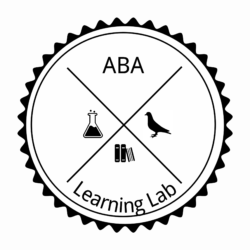Brian Kaminski, RBT, Graduate Student of Behavior Analysis
“ABA in a nutshell, is good teaching.
Sometimes people are not behavior analysts and they do a great job with kids with autism because they are naturally great teachers.
But most people need training … in how to break down the skills that kids with autism aren’t learning by accident like other kids and [then] build them back up.”
These were the words of Dr. Greg Hanley, PhD, BCBA-D and it remains one of my favorite, most concise descriptions of ABA – good teaching.
We have previously examined how good teaching starts with good instructions (in ABA or any context for that matter). In clinical terms, we would say that the “SD “(discriminative stimulus) must be given clearly and naturally.
Next, we explored the conceptual underpinnings of why a child’s name should not be included in the SD during Discrete Trial Instruction (DTI). Namely, we want the child to attend to the relevant aspect of the instruction, as well as avoid conditioning their name to be a signal of impending demands.
Now we’ve arrived at what to do after an instruction has been given and a child makes a response – specifically, a correct response.
Verbal praise
Following a child’s correct response, behavior analysts prescribe the immediate delivery of reinforcement – often in the form of verbal praise and/or tangible item or activity.
Although teachers and parents often deliver praise following appropriate behavior, there is limited research on the effects of praise alone because it is so often implemented as a component of more complex treatments (Falcomata et al., 2008).
While there is some research that demonstrated that praise alone was effective for increasing behaviors such as studying (Hall, Lund, & Jackson, 1968) and math performance (McLaughlin, 1982) little is known about the effects of quality of verbal praise (volume, intonation, duration, immediacy) on the rate of skill acquisition.
In other words, does the old adage “It’s not what you say, but how you say it” apply to reinforcement?
Effects of neutral and enthusiastic praise
Weyman and Sy (2018) looked to compare the effects of neutral praise, enthusiastic praise, and no praise on the rate of discrimination acquisition (match to sample) with adults with autism and an intellectual disability during DTI.
Neutral praise was defined as praise delivered in a monotone voice with low pitch, fluctuation, and volume.
Enthusiastic praise was defined as praise delivered with high pitch, fluctuation, and volume.
No praise was defined as withholding praise.
All praise statements were the same length (e.g., “Great job matching _______with _______!”) and approximate duration (3 seconds).
If the participant responded incorrectly or did not respond within 5 s of materials presentation, the experimenter provided least-to-most prompting.
Mastery of targets for each condition was defined as independent responding during at least 80% of trials across three consecutive sessions.
Results
Across all three participants, the rate of acquisition was slightly faster during the enthusiastic praise condition compared to the other conditions. However, these differences between conditions were minimal.
These results suggest that there may be a slight advantage to using enthusiastic praise compared to neutral praise or no praise during DTI for some individuals.
For individuals whose rate of skill acquisition is not found to be impacted by praise quality, the authors recommend allocating time and resources to addressing other aspects of treatment integrity.
Similar rates of skill acquisition in the no praise condition compared to the praise conditions for all three participants also seem to suggest that prompting alone was effective in teaching these new skills. This would support research which suggests that prompting may have more control over responding than reinforcement (Tarbox et al., 2007).
Enthusiastic praise still remains a strong preference over neutral or no praise for many caregivers and professionals, as well as the clients they serve. It is just one of the many components of what makes ABA good teaching.
References
Clausen, K. A., Alden-Anderson, E., Stephenson, K., Mueller, A., & Klatt, K. P. (2007). The effects of enthusiasm on skill acquisition by children with autism. The Journal of Speech and Language Pathology – Applied Behavior Analysis, 2, 32-45. https://doi. org/10.1037/h0100205
Falcomata, T. S., Northup, J. A., Dutt, A., Stricker, J. M., Vinquist, K. M., & Engebretson, B. J. (2008). A preliminary analysis of instructional control in the maintenance of appropri- ate behavior. Journal of Applied Behavior Analysis, 41, 429-434. https://doi.org/10.1901/jaba.2008.41-429
Hall, R. V., Lund, D., & Jackson, D. (1968). Effects of teacher attention on study behavior. Journal of Applied Behavior Analysis, 1, 1-12. https://doi.org/10. 1901/jaba.1968.1-1
McLaughlin, T. F. (1982). The effects of teacher praise on accuracy of math performance for an entire special education classroom. Behavioral Engineering, 7, 81-86.
Tarbox, R. S. F., Wallace, M. D., Penrod, B., & Tarbox, J. (2007). Effects of three-step prompting on compliance with caregiver requests. Journal of Applied Behavior Analysis, 45, 703-706. https://doi.org/10. 1901/jaba.2007.703-706
Weyman, J. R., & Sy, J. R. (2018). Effects of neutral and enthusiastic praise on the rate of discrimination acquisition. Journal of Applied Behavior Analysis,9999(N/A), N/A.

